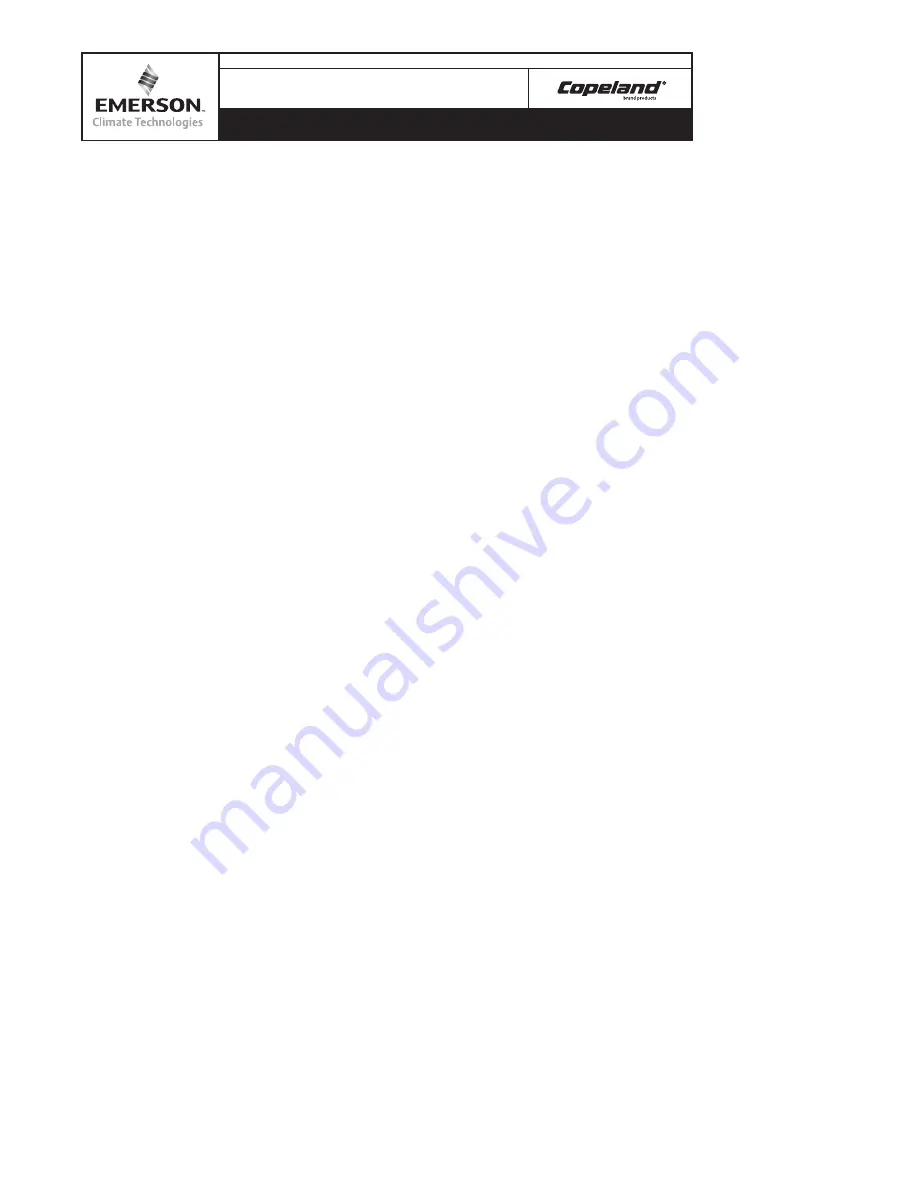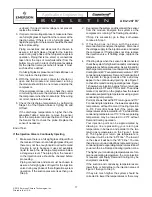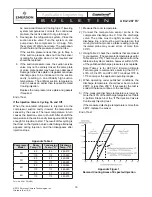
16
© 2012 Emerson Climate Technologies, Inc.
Printed in the U.S.A.
AE4-1287 R7
Application Engineering
B
U
L
L
E
T
I
N
Bench Check of the Module and Injection Valve
Required equipment:
• A controlled voltage source the same as the rating
of the module and the injection valve.
•
A
multimeter.
• If the jumper supplied on the sensor plug of the
module is not available you may use a small paper
clip for the test.
Before starting the test, make sure you have the correct
module and injection valve.
1. With the module control voltage disconnected, short
the module sensor plug female terminals with the
jumper or the paperclip. Press the module reset
button.
2. Attach the injection valve leads to terminals “L2”
and “S” of the module. The injection valve should
be propped in an upright position.
3. You should read zero ohms between the “L” and “M”
terminals of the module. This is the Normally Closed
(NC) contact of the Single Pole Double Throw (SPDT)
module alarm relay. You should read an open circuit
between “L” and “A”. This is Normally Open (NO)
contact of the alarm relay.
4. Energize the module by bringing module rated
voltage to terminals “Ll” and “L2”.
*When the sensor connection at the module is
shorted, a very low resistance is seen by the module
as a very high temperature, and an injection signal
is sent to the injection valve.
5. The injection valve will be energized by the closing
of an electronic switch in the module. The control
voltage to energize the injection valve may be
measured across module terminals “S” and “L2”.
*Because this measurement is made across an
electronic switch some “leakage” voltage may be
measured when the switch is deenergized. This
voltage is much less than the control voltage which
is measured when the electronic switch is closed.
The injection valve operation may also be checked
by listening to the “click” heard each time the coil
of the injection valve is energized and the injection
valve solenoid plunger seats itself.
If background noise prevents an audible check
of the injection valve coil and magnant operation,
grip the injection valve magnet housing and loosen
its housing cover screw until magnet vibration is
felt. This proves solenoid operation. Retighten the
magnet housing cover screw after this check.
6. After one minute, the module should trip. The run
contact “L” to “M” should open, and the alarm contact
“L” to “A” should close. Deenergize the module and
disconnect the injection valve. The resistance should
be zero ohms between “L” and “A”, and between “L”
and “M” there should be an open circuit.
7. Reset the module. Remove the jumper from the
module probe plug so there is an open circuit at
the plug input.
8. Energize the module.
When the sensor connection to the Demand Cooling
Module is opened the very high resistance is
interpreted by the module as a very low temperature.
Consequently no injection signal is sent to the
injection valve.
9. The injection valve should be energized. A recheck
of Step 5 will con
fi
rm this.
10. Refer to the test of Step 6 to check the alarm circuit.
Reset the module after the test. If the module or
injection valve fails any of the checks it should be
replaced.
End of Test
Installed System Checks of
Demand Cooling Components
When the Demand Cooling control injects saturated
refrigerant into the suction cavity of the compressor,
the outlet tube of the injection valve frosts. If the
module sensor connection is opened or shorted while
the module is energized, the module will trip after one
minute of operation and must be reset to continue.
Before starting the test, make sure you have the
correct module and injection valve.
If the Injection Valve is Not Injecting
1. With the system deenergized, disconnect the sensor
from the module and jumper the terminals of the
module connector. Energize the system so the
compressor is running and the module is activated.
The injection valve should begin injecting, and frost
should form on the outlet tube of the injection valve.
If frost forms, go to Step 4 otherwise continue to
Step 2.
2. If frost does not form in Step 1, check to see if there
is control voltage on the coil of the injection valve
(terminals “L2” and “S” of the module).
*Because this measurement is made across an
electronic switch in the module some “leakage”
voltage may be measured when the switch is
deenergized. This voltage is much less than the
control voltage which is measured when the switch



































